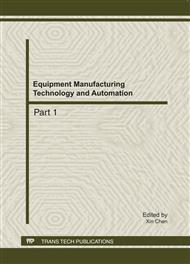p.2069
p.2073
p.2079
p.2085
p.2091
p.2097
p.2103
p.2107
p.2113
Emergency Strategy of Civic Critical Infrastructure to the Urgent Events
Abstract:
Abstract. Civic critical infrastructure systems have become an inter-connected networked system due to the all kinds of interdependencies. Under the circumstance of emergent events, disruption or failure of one system may lead to the cascading effect on other interdependent systems. We develop a mathematic model based on supply and demand relation of multi-network systems considering the coupling characteristic of critical infrastructures when emergent events happen. The model can offer the emergency strategy to the urgent accident by analyzing events chain after single node fails. The numerical results indicate the approach taken in this research can break through the limit of conventional emergency strategy within single system of dispatching standby products as inventory and to better optimize the total loss of the whole networked system.
Info:
Periodical:
Pages:
2091-2096
Citation:
Online since:
August 2011
Price:
Сopyright:
© 2011 Trans Tech Publications Ltd. All Rights Reserved
Share:
Citation:


